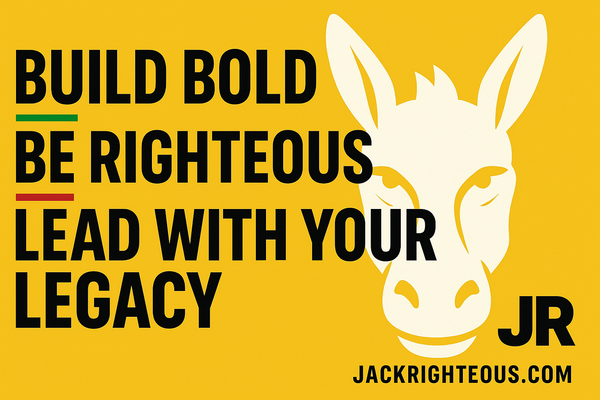Canada 2025: A Political and Historical Crossroads
Gary Whittaker
🇨🇦 Article 2: Canada at the Crossroads — Not Just Politically, but Historically
#CanadaStrong Election Series – Part 2 of 5
Introduction
The 2025 federal election is not just a shift in leadership. It’s a collision of priorities, ideologies, and futures—set against the backdrop of global disruption and domestic fatigue.
After nearly a decade under Justin Trudeau, Canada is now under the leadership of Mark Carney, a globally respected economist, but politically untested. Facing him is Pierre Poilievre, whose populist momentum mirrors rising discontent across the developed world. Meanwhile, Jagmeet Singh is fighting to retain influence, not just relevance, as Canadians confront a changing federal system, new global threats, and declining trust in institutions.
This isn’t a normal election. It’s a structural realignment.
🧭 Why This Isn’t Just Another Campaign
1. A Post-Trudeau Era
Trudeau didn’t just leave office—he left behind a fractured progressive base, weighed down by unmet housing promises, inflation fatigue, and accusations of drift. According to Angus Reid’s March 2025 polling, only 31% of Canadians view the Trudeau government’s final term positively.
Carney’s entry as Liberal leader marked a reset in tone, but not in ideology. His campaign emphasizes discipline, economic resilience, and institutional credibility.
“Trudeau made you feel something. Carney wants you to trust the numbers.”
— Political scientist Daniel Béland, Globe and Mail, Feb. 2025
2. Poilievre Isn’t Just Running Against Liberals—He’s Running Against Ottawa
Pierre Poilievre’s campaign frames the federal government itself as the problem: too slow, too expensive, too involved. His platform includes carbon tax repeal, building deregulation, defunding the CBC, and firing federal “gatekeepers.”
338Canada polls show the Conservatives leading nationally with 35–37%, ahead of the Liberals (29–31%) and NDP (18–19%).
Poilievre’s strategy isn’t just anti-government—it’s a direct challenge to how Canadian federalism has functioned for decades.
3. Singh and the NDP: Fighting From the Middle of the Bridge
Singh’s platform focuses on social protections: pharmacare, dental care, housing, and taxing the ultra-wealthy. But success depends entirely on a minority Parliament scenario.
- Voters see NDP policies as tied to a Liberal partnership.
- The progressive vote is shrinking.
- Only 28% of Canadians believe the NDP could manage the economy well (Abacus, March 2025).
📚 Historical Crossroads
| Year | Context | What Changed |
|---|---|---|
| 1980 | Quebec referendum + Reagan elected | Trudeau strengthened federalism; U.S. shifted hard right |
| 2006 | Harper ends Liberal era | Foreign policy shifted; Kyoto targets dropped |
| 2016 | Trump elected | Canada defended institutions, trade, global norms |
| 2025 | Trump 2.0 + domestic discontent | Voters choosing between stability and disruption |
🌐 Canada’s Place in the World Is No Longer Assumed
With Donald Trump back in the White House, Canadian sovereignty is under real pressure:
- 🔹 U.S. tariffs have hit Canadian minerals (February 2025)
- 🔹 USMCA is under threat of renegotiation
- 🔹 NATO contributions are under scrutiny
- 🔹 Canada labeled “a soft border problem” on Fox News
Carney promises institutional diplomacy and increased defense spending.
Poilievre promises energy independence and bilateral deals.
Singh proposes digital, labor, and environmental sovereignty.
In 2025, foreign policy isn’t abstract—it’s inflation, military readiness, and trade access.
🇨🇦 Canadian Federalism Is Being Rewritten
This election reopens the question: What should the federal government actually do?
- Poilievre: More power to provinces
- Carney: National cohesion through managed coordination
- Singh: Expanded federal role in social care
- Bloc/PPC: Oppose federal expansion on principle
The federal system that managed universal health care and equalization is now up for renegotiation—whether voters realize it or not.
🧠 Final Reflection: This Election Is a Long-Term Decision
We are not choosing a new face—we are choosing a new foundation.
- Will Canada double down on globalism and institutional cooperation?
- Or scale back toward sovereignty and deregulation?
- Will we centralize or decentralize national leadership?
This isn’t a reset—it’s a redefinition.
And future generations may look back on April 28, 2025 as the day Canada changed course.
📚 Explore the #CanadaStrong Election Series:
1️⃣ Part 1: Leadership Strength Matrix
2️⃣ Part 2: Canada at a Political Crossroads
3️⃣ Part 3: Campaign Promises vs. Reality
4️⃣ Part 4: What Happens If No One Wins?
5️⃣ Part 5: Who Will Keep Canada Strong?
